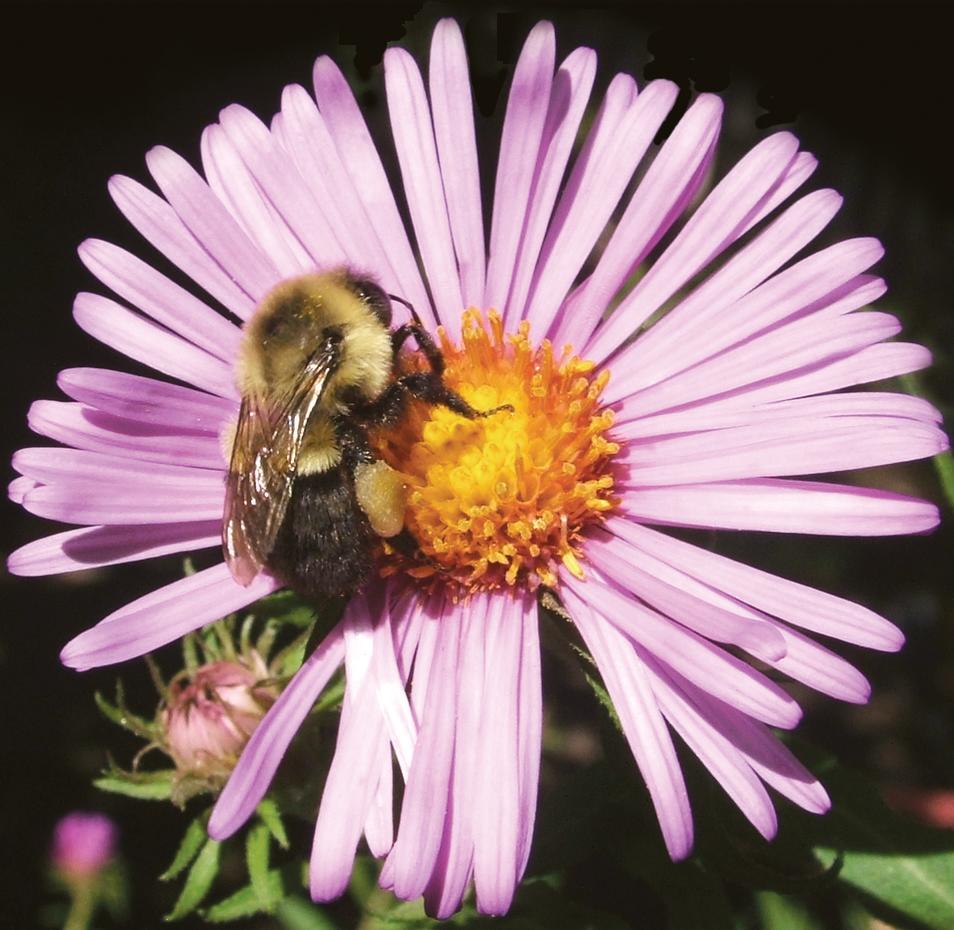Elaine Evans, Author—Befriending Bumble Bees

Around the world, bumble bees are given friendly nicknames such as humble bees, cow bees, and thunder bees. They are well known as large fuzzy bees dutifully flying from flower to flower (Figure 5.1). These teddy bears of the insect world also play a vital role in production of many important crops. Bumble bee pollination improves the quality of tomatoes, cranberries, blueberries, and many other crops. As natives of North America, bumble bees are particularly well suited to pollinating our native flowers, flowers that provide food and shelter to countless other organisms.
Each bee species has its own unique attributes that suit them for pollinating their preferred flowers. To effectively use bumble bees as pollinators, it is important to understand the needs of the plants and what physical and behavioral characteristics bumble bees have to offer.
Bumble bee pollinating services are provided by both wild and managed bumble bee populations. Managed bumble bees are primarily available through commercial producers, although methods for raising your own colonies are available. Wild populations of many bumble bee species appear to be in decline worldwide. Possible causes of the declines include habitat loss, pesticides, climate change, pests, parasites, and disease.
